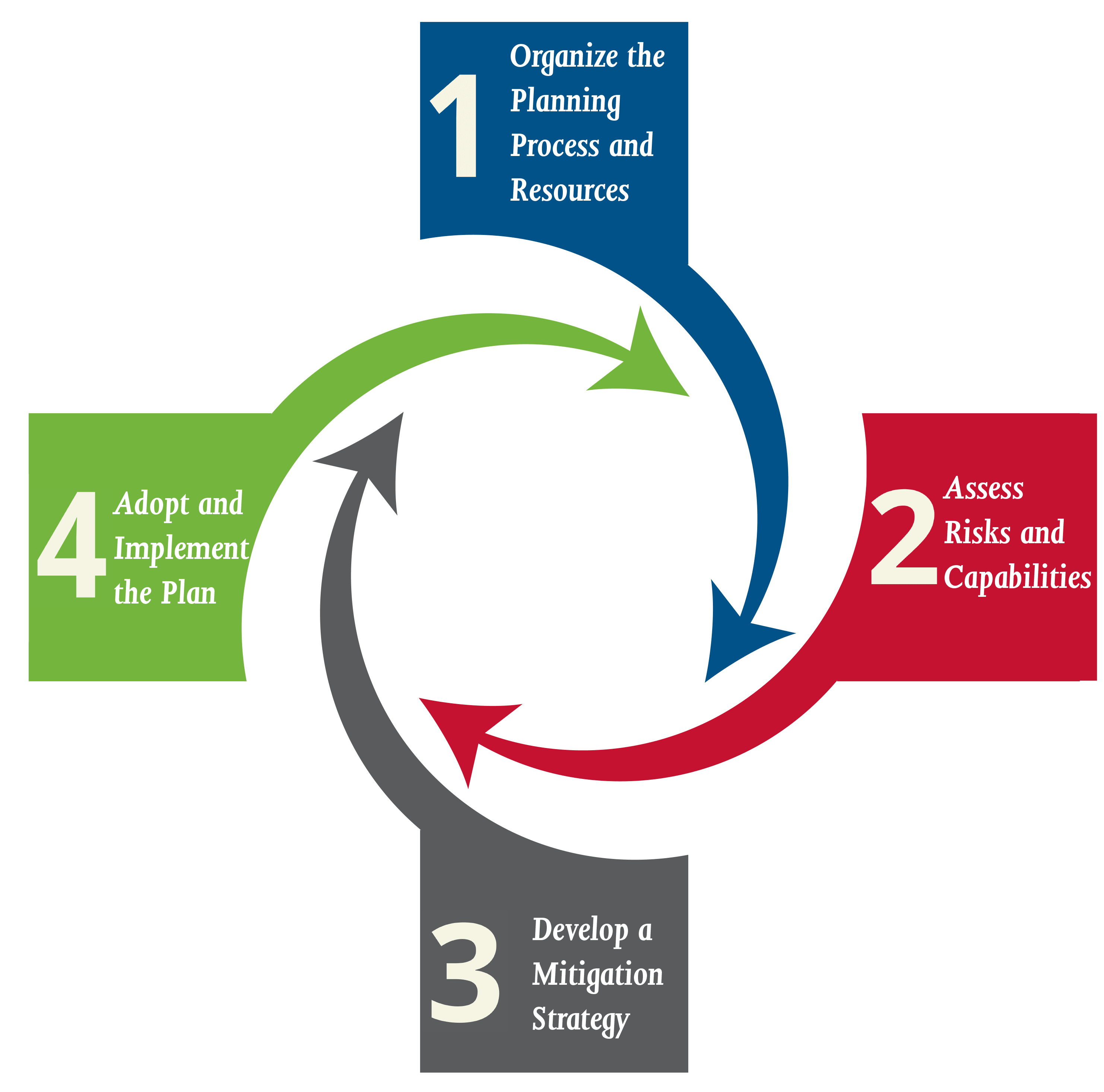The mitigation planning process is slightly different for each state, local, tribal, and territorial governments, but regardless of the plan type, there are four core steps in completing a hazard mitigation plan or plan update.

1. Organize the Planning Process and Resources
At the start, a state, local, tribe, or territory government should focus on assembling the resources needed for a successful mitigation planning process. This includes securing technical expertise, defining the planning area, and identifying key individuals, agencies, neighboring jurisdictions, businesses, and/or other stakeholders to participate in the process. The planning process for local and tribal governments must include opportunities for the public to comment on the plan.
2. Assess Risks
Next, the state, local, tribe, or territory government needs to identify the characteristics and potential consequences of hazards. It is important to understand what geographic areas each hazard might impact and what people, property, or other assets might be vulnerable.
The four basic components of a risk assessment are:
- Hazard identification;
- Profiling of hazard events;
- Inventory of assets; and
- Estimation of potential human and economic losses based on the exposure and vulnerability of people, buildings, and infrastructure.
3. Develop a Mitigation Strategy
The state, local, tribe, or territory government then sets priorities and develops long-term strategies for avoiding or minimizing the undesired effects of disasters. The strategy is based on an assessment of the unique set of regulatory, administrative, and financial capabilities to undertake mitigation.
The mitigation strategy also includes a description of how the mitigation actions will be implemented and administered.
4. Adopt and Implement the Plan
Once FEMA has received the adoption from the governing body and approved the plan, the state, local tribe, or territory government can bring the mitigation plan to life in a variety of ways, ranging from implementing specific mitigation actions to changing aspects of day-to-day organizational operations. To ensure success, the plan must remain a relevant, living document through routine maintenance. The state, tribe, or local government needs to conduct periodic evaluations to assess changing risks and priorities and make revisions as needed.


